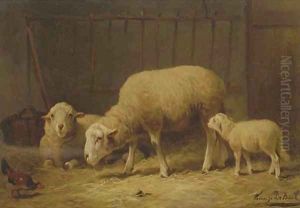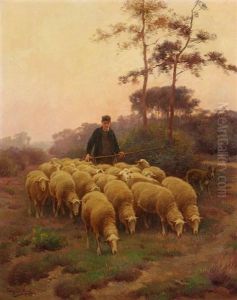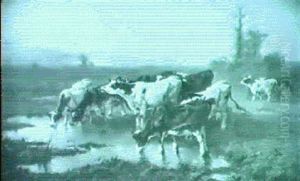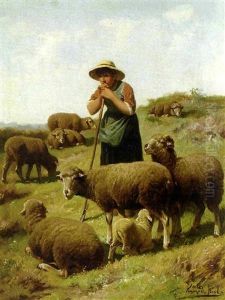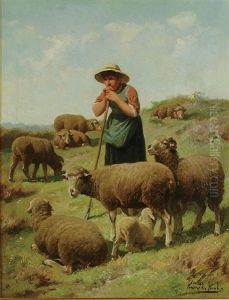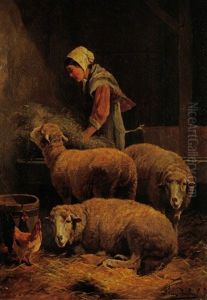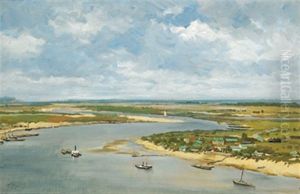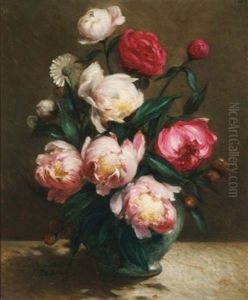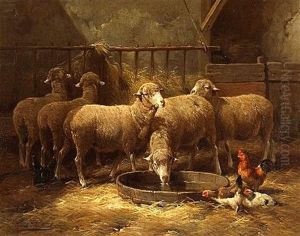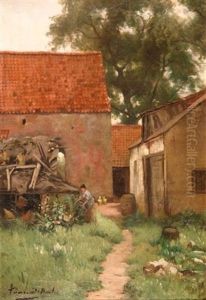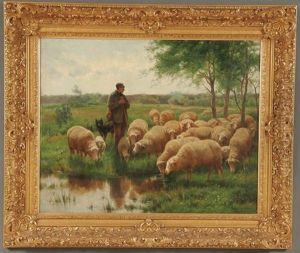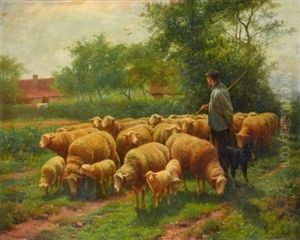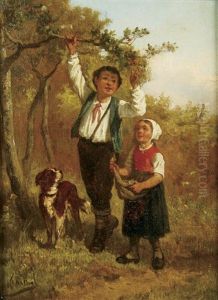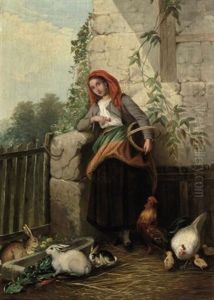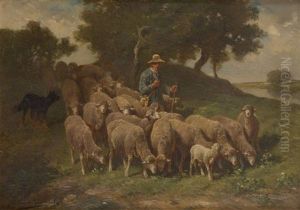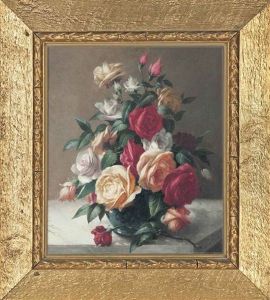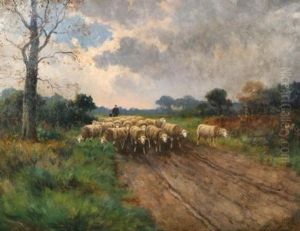Frans De Beul Paintings
Frans De Beul was a Belgian artist, born on October 20, 1849, in Dendermonde, Belgium. He is known for his landscape paintings, which often featured the Belgian countryside, and for his historical and genre scenes. De Beul's work was part of a larger 19th-century European art movement that focused on naturalism and often romanticized rural life.
Initially, De Beul trained at the Academy of Dendermonde under the guidance of François Verhas before moving on to further his studies at the Royal Academy of Fine Arts in Antwerp. There he was under the tutelage of Nicaise de Keyser, one of the most prominent Belgian historical painters of the time. De Beul's early works were heavily influenced by his teachers, and he began to build a reputation as a skilled painter with a particular penchant for capturing the essence of the Flemish countryside.
Throughout his career, De Beul exhibited his works in various salons and exhibitions. He was also a member of several artistic societies, which played a crucial role in the art scene of the time. His paintings were characterized by a fine attention to detail and a deep appreciation for the beauty of the natural landscape. He was adept at using light to enhance the mood of his paintings, a technique that made his works particularly appealing to art collectors and the public alike.
Unfortunately, De Beul's life was not without its hardships. The early 20th century was a time of great turmoil in Europe, and the First World War would have a profound impact on the artist. The war brought destruction to many parts of Belgium, including regions that De Beul had depicted in his paintings. Despite these challenges, he continued to produce work during this period, though the war undoubtedly influenced the tone and subjects of his later pieces.
Frans De Beul's death came on February 13, 1919, in Schaerbeek, only a short time after the end of World War I. Despite being less well-known today, during his lifetime, De Beul was a respected artist who contributed to the cultural heritage of Belgium. His paintings remain as a testament to his skill and his deep love for the Flemish landscape, and they continue to be admired by art enthusiasts and collectors. His works are part of several museum collections, where they preserve the memory of the rural beauty that once dominated the Belgian countryside.
